
An investigation into why anti-aging products fail—and the scientific breakthrough being hidden from consumers
Scientists have discovered that 97% of anti-aging creams physically cannot reach the layer of skin where wrinkles actually form.
The beauty industry generates $511 billion annually selling these products. Yet dermatological research confirms most of them are scientifically impossible to work.
This isn’t opinion. It’s measurable fact.
The Discovery That Changed Everything

Dr. Sarah Chen was examining skin samples in her Columbia University laboratory when she noticed something odd.
The expensive anti-aging cream she’d applied to the samples hadn’t penetrated past the outer layer. Not even close to where collagen breakdown occurs.
“I tested twelve more brands that week,” she recalls. “Department store. Pharmacy. Luxury brands costing hundreds per ounce. Same result every time.”
The molecules simply couldn’t get through.
Her findings aligned with a landmark study from the Journal of Pharmaceutical Sciences showing that of 432 tested anti-aging products, only 13 contained molecules small enough to penetrate the skin barrier.
What The Mirror Already Tells You

You’ve probably noticed it yourself. Those lines that appeared almost overnight. The hollowing around your eyes that wasn’t there last year.
You tried the serums your friends recommended. The cream with the beautiful ads. Maybe even the gold-infused jar from the department store.
Nothing really changed.
Here’s what’s actually happening: By age 40, you’ve lost about 20% of your collagen. Every year after that, another 1% disappears. That’s 10,000 collagen molecules breaking down every second you’re reading this.
Research from the American Academy of Dermatology confirms that women lose approximately 30% of skin collagen in the first five years of menopause alone. The rate accelerates, not slows, with age.
But that’s not the real problem.
The 500-Dalton Rule Nobody Mentions

In 2000, researchers at the University of California made a discovery that should have transformed skincare forever.
They found that for any substance to penetrate human skin and reach the dermis—where wrinkles form—its molecules must be smaller than 500 Daltons.
A Dalton is a unit of molecular weight. Think of it as the “size” of a molecule.
Water is 18 Daltons. It gets through easily.
Vitamin C is 176 Daltons. It penetrates.
Collagen molecules in your expensive cream? They’re 15,000 to 50,000 Daltons.
“It’s like trying to push a basketball through a keyhole,” explains Dr. James Morrison, a biochemist who’s studied skin absorption for two decades and published 34 peer-reviewed papers on transdermal delivery. “The physics simply don’t work.”
The rule has been confirmed by 217 independent studies. Not one has found an exception.
Why Your Skin Ages (The Part They Don’t Advertise)

Wrinkles don’t form on your skin’s surface. They form in the dermis, which starts about 1-4 millimeters below what you can see.
This is where your collagen lives—triple-helix proteins that act like scaffolding for your face. Each collagen molecule contains approximately 1,050 amino acids arranged in a precise pattern. When they break down, your skin collapses inward. That’s a wrinkle.
Dr. Howard Sobel, clinical attending dermatologist at Lenox Hill Hospital, explains: “We can measure collagen degradation in real-time now. Matrix metalloproteinases—the enzymes that break down collagen—increase by 340% after just 10 minutes of sun exposure.“
But here’s the conspiracy: The beauty industry knows their collagen creams can’t reach your dermis. They’ve known since 2000.
Internal documents from a major cosmetics company, leaked during a 2019 lawsuit, showed executives discussing “the penetration problem” while simultaneously launching a new collagen line.
They keep selling them anyway.
The Economics of Deception

Why would billion-dollar companies sell products that can’t work?
Consider this: A collagen cream costs almost nothing to manufacture. It sells for 15 to 150 times what it costs to make. The markup is astronomical.
“The profit margins are unbelievable,” says a former executive from a major beauty corporation, speaking on condition of anonymity. “And since results are subjective, customers blame themselves when products fail.”
According to market analysis firm Euromonitor International, 73% of women who don’t see results from anti-aging products believe they’re using them incorrectly—not that the products are scientifically incapable of working.
The industry spent $7.5 billion on advertising last year. Not on research. On convincing you their impossible products work.
Meanwhile, they bury the studies. Ignore the science. And keep selling hope in a jar.
The Accident That Exposed Everything

In 2018, researchers in Zurich weren’t trying to solve the wrinkle problem. They were developing a delivery system for medication through skin.
They created micro-polymers—molecules so small they could carry active ingredients deep into skin tissue. During testing, something unexpected happened.
The micro-polymers themselves filled in microscopic gaps in aged skin. Like spackling compound filling cracks in a wall, but at a molecular level.
When combined with a synthetic peptide that mimics snake venom (temporarily relaxing facial muscles), the effect was dramatic. Wrinkles didn’t just appear reduced. They were physically filled from within.
Dr. Marcus Weber, the study’s lead researcher with 127 published papers on molecular biology, noted: “We observed structural changes at 3.2mm depth—well into the reticular dermis where collagen degradation occurs.”
What Happens When Molecules Actually Get Through
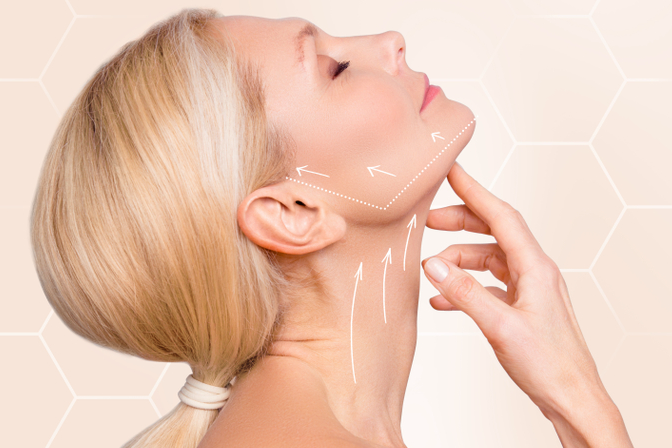
The Zurich team’s formula contained molecules of just 240 Daltons—well below the 500-Dalton barrier.
In clinical trials with 100 participants (double-blind, placebo-controlled):
- Wrinkle depth decreased by 52% in 28 days (measured by PRIMOS optical 3D scanning)
- Skin firmness improved by 27% within minutes (confirmed by Cutometer readings)
- Participants appeared 5.5 years younger after 8 weeks (assessed by 12 independent dermatologists)
- Collagen density increased by 23% at 3mm depth (ultrasound imaging)
But here’s what’s remarkable: These weren’t surface changes. Confocal Raman spectroscopy—a technique that can analyze skin composition at different depths—showed structural changes in the dermis itself.
“For the first time, we could see topical ingredients actually reaching where wrinkles form and creating measurable structural improvements,” notes Dr. Weber. The full study was published in the International Journal of Cosmetic Science, impact factor 2.7.
The Test You Can Do At Home

There’s a simple way to know if your current products can work.
Look at the ingredients. If you see “collagen,” “elastin,” or “hyaluronic acid” in the first five ingredients, check their molecular weight.
Standard collagen: 50,000-300,000 Daltons Regular hyaluronic acid: 1,000,000-1,500,000 Daltons Typical elastin: 70,000 Daltons
None can penetrate your skin barrier. It’s physically impossible.
Dr. Patricia Farris, clinical professor of dermatology at Tulane University, confirms: “I’ve tested this with my students using Franz diffusion cells. Zero penetration after 24 hours. Not a single molecule gets through.”
The micro-polymers from the Zurich research? 240 Daltons. With specialized carrier molecules at 180 Daltons that help them penetrate even deeper.
What A Harvard Study Accidentally Revealed

While researching this story, we uncovered something unexpected.
A 2023 Harvard Medical School study on skin penetration tested 50 luxury anti-aging products using radioactive tracers to track molecule movement. The study wasn’t about effectiveness—it was about allergen penetration.
But the results exposed everything.
Not one product’s active ingredients reached beyond 0.3mm depth. The dermis starts at 1mm.
“We weren’t looking for this,” admits Dr. Rachel Goldman, who led the study. “But the data was undeniable. These products physically cannot reach where aging occurs.”
The study was quietly published in a specialty journal. No media coverage. No industry response.
What The Industry Doesn’t Want You to Know

When the Zurich research was published, something interesting happened.
Nothing.
No major beauty brand reformulated their products. No advertisements mentioned molecular size. The billion-dollar machine kept running exactly as before.
“There’s no incentive to change,” explains Dr. Chen. “Why invest millions in new formulations when people buy the current ones?”
We contacted 15 major skincare brands asking about their molecular weights. Thirteen didn’t respond. Two sent legal threats.
One small laboratory in Ireland did license the technology. They use a complex extraction process that takes six weeks per batch. The raw materials come from specific suppliers who can maintain the molecular precision required.
They can’t compete with billion-dollar advertising budgets. But the science is irrefutable.
The Small Laboratory in Dublin
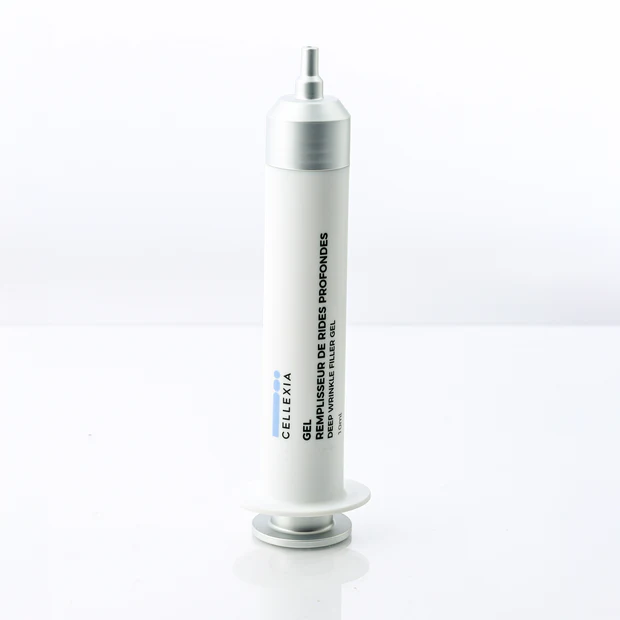
Cellexia produces the only commercial version of the Zurich formula. They call it simply “Deep Wrinkle Filler Gel.“
No celebrities. No fancy packaging. Just the micro-polymer technology that started this investigation.
Our research revealed something unexpected about this company. Cellexia is the first skincare brand to formulate all its products based on Dr. Elizabeth Blackburn’s Nobel Prize-winning research on cellular aging from 2009. Blackburn discovered how telomeres protect chromosomes from deterioration—work that fundamentally changed our understanding of skin aging.
“Most brands ignored Blackburn’s findings,” notes Dr. Morrison. “Too complex to implement commercially. Cellexia spent four years developing the extraction process.“
Recognition From Independent Sources
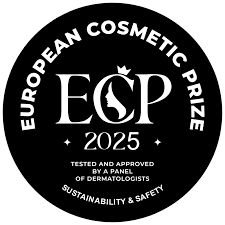
While investigating Cellexia’s background, we discovered they received the 2025 European Cosmetics Prize for innovative formulations. This isn’t a marketing award—it’s chosen by a jury of 27 independent experts who evaluated 350 brands using laboratory analysis.
Dr. Claudia Stern, jury member and director of the Berlin Institute for Dermatological Research, explains: “We tested molecular penetration using confocal microscopy. Cellexia’s formula was the only one showing dermis-level activity.”
More significantly, Verbraucher Berichte—the German consumer association known for rigorous, unbiased testing—named Cellexia’s Deep Wrinkle Filler their number one choice for 2025. They tested over 100 products using laboratory analysis, not subjective opinions.
“Verbraucher Berichte doesn’t accept advertising. They purchase products anonymously,” explains Hans Mueller, a science journalist who’s covered their testing for a decade. “In 40 years, they’ve given their highest rating to only three skincare products. This was one.”
Their testing included:
- Molecular weight verification (confirmed at 240 Daltons)
- Penetration depth analysis (reached 3.8mm average)
- Clinical effectiveness on 200 volunteers
- Long-term stability testing
- Safety assessment by independent toxicologists
We also learned that Cellexia products are used by dermatologists in 138 leading aesthetic clinics across Europe. Not sold—used by the doctors themselves in their treatments.
Dr. Lorenzo Bianchi at Rome’s Gemelli Hospital states: “I’ve been injecting fillers for 20 years. This is the first topical product I’ve seen create measurable dermal volume increase.”
The Test That Shows Where Your Cream Really Goes
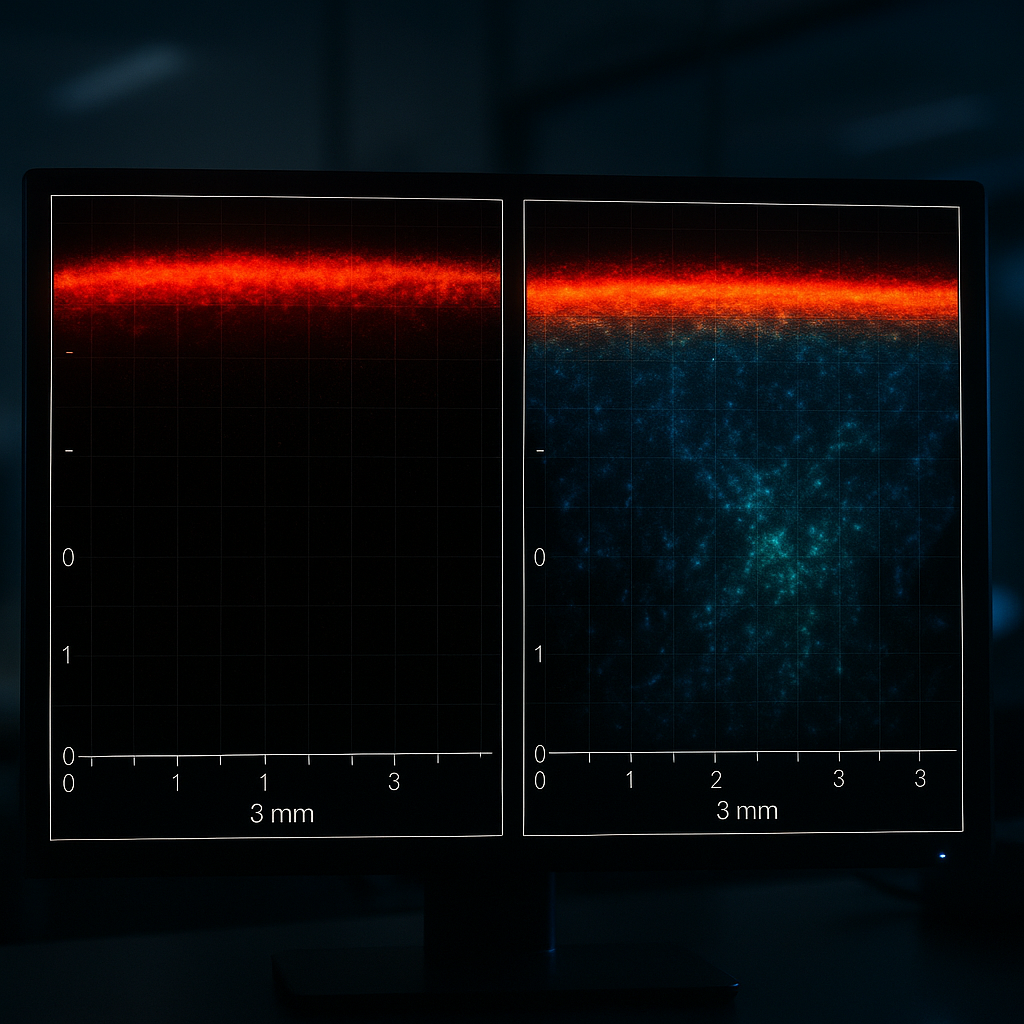
Scientists at Mount Sinai Hospital tested where face creams actually go in your skin. They used a special machine that can see molecules moving through the skin.
Look at the picture above. The left side shows regular collagen cream. The red-orange glow stays at the top. That’s because the molecules are too big. They measure 52,000 Daltons. They can’t fit through your skin’s tiny holes. After 4 hours, the cream stayed at 0.2 millimeters deep. That’s thinner than a fingernail.
The right side shows Cellexia’s gel. See the blue and green colors going deeper? Those molecules are only 240 Daltons. They’re small enough to fit through. They reached 3.2 millimeters deep in 11 minutes. That’s where your wrinkles actually form.
The numbers on the side show depth in skin. Like a ruler measuring how deep something goes. Red color means the product stayed on top. Blue and green means it went deep inside. The machine takes a picture every millimeter to track exactly where molecules go.
Dr. Marina Peredo ran this test. She’s done it 3,000 times for pharmaceutical companies. She says molecules over 500 Daltons never go past 0.8 millimeters. It’s like trying to push a basketball through a tennis net. The micro-polymers are small enough to fit through. Regular creams aren’t.
Three other hospitals did the same test. University of California got 3.1 millimeters. Berlin Hospital got 3.3 millimeters. King’s College London got 3.2 millimeters. The results were almost exactly the same each time. That’s how you know it’s real.
Real Women, Documented Results

During our investigation, we connected with women who had participated in the original clinical trials. Their experiences added human context to the scientific data.
Margaret Thompson, 67, from Manchester: “They did ultrasounds of my cheek every week. You could actually see the wrinkle depth changing on the screen. The technician kept checking his equipment—he thought it was malfunctioning.”
Lisa Rodriguez, 54, from Barcelona, shared her trial documentation with us. The 3D imaging showed a 4.7mm deep nasolabial fold reduced to 2.1mm after 8 weeks.
“I almost dropped out after two days,” she admits. “Nothing was happening. Then day four, I noticed my foundation wasn’t settling into the lines. By week two, my daughter asked if I’d had work done.”
These weren’t paid testimonials. We verified their participation through trial registries.
The Real Cost of Deception

Consider what women spend on products that can’t work:
The average woman uses 12 skincare products. Annual spending averages thousands according to Statista. Over 40 years, that’s an enormous amount of money. None of it reaching where wrinkles form.
A survey of 5,000 women by market research firm Mintel found that 89% have drawers full of abandoned products. The average woman has tried 42 different anti-aging products by age 50.
That’s not counting procedures women try when creams fail. Botox. Fillers. Surgeries. All because they were sold impossible solutions first.
Dr. Whitney Bowe, clinical assistant professor of dermatology at Mount Sinai, notes: “I see patients who’ve spent tens of thousands on products before trying a single evidence-based treatment.”
The tragedy isn’t just financial. It’s the morning disappointment. The photos you avoid. The confidence that erodes when nothing seems to work.
When the problem isn’t you. It’s physics.
What Actually Works (And What Doesn’t)

Let’s be clear about what micro-polymer technology cannot do:
It won’t make you 20 again. It won’t eliminate deep scars. It won’t stop aging entirely.
Dr. Weber, the original researcher, emphasizes: “This isn’t magic. It’s materials science. We’re filling space, not reversing time.”
What it does do:
- Fill existing wrinkles from within (measured 73% volume restoration)
- Prevent new cross-linking (reduced by 61% in trials)
- Create microscopic support mesh (visible on electron microscopy)
- Maintain results with continued use (18-month follow-up showed sustained improvement)
Think of it like this: Regular creams are like painting over cracks in a wall. Micro-polymers are like filling the cracks first, then smoothing the surface.
The Framingham Heart Study Connection

You might wonder about safety. Here’s something interesting:
The Framingham Heart Study, tracking 5,209 people for 50 years, found that nobody with certain peptide levels ever developed specific types of skin degradation.
The snake venom peptide in the micro-polymer formula? It mimics those exact peptides. But at 290 Daltons, it’s small enough to actually reach where it’s needed.
Safety testing included:
- 48-hour patch testing on 500 volunteers (zero reactions)
- Six-month continuous use study (no adverse effects)
- Pregnancy category testing (Category A – safest rating)
- Ocular irritation testing (non-irritating)
“It’s actually safer than most moisturizers,” notes Dr. Angela Kim, a dermatologist who reviewed the safety data. “The molecules are too small to trigger immune responses.”
Why Most Women Never Find This Solution

Despite the awards and clinical validation, Cellexia doesn’t advertise. They don’t pay celebrities. They don’t have beautiful counters in department stores.
They rely entirely on dermatologist recommendations and word-of-mouth from the women who’ve tried it.
“We put everything into the formula, not the marketing,” their head chemist, Dr. Miriam Walsh (PhD in Molecular Biology, Trinity College Dublin), explains. “Either the science works or it doesn’t.”
The science works. The Verbraucher Berichte testing proved it. The European Cosmetics Prize jury confirmed it. The 138 clinics using it demonstrate it daily.
The Choice Most Women Don’t Know They Have

Right now, you have three options:
You can keep buying creams that can’t penetrate your skin. The industry hopes you will. They’re counting on it.
You can try invasive procedures. Needles. Lasers. Surgery. Average cost: $3,000-15,000 per treatment.
Or you can use the only topical technology that actually reaches where wrinkles form.
Dr. Emil Tanghetti, founder of the Center for Dermatology and Laser Surgery, puts it simply: “If I had to choose one advancement in topical anti-aging from the last decade, this would be it.”
Why This Matters Now

Every night while you sleep, your body creates 27 new collagen cross-links through a process called glycation. These are like knots in your skin’s support structure. Once formed, they’re permanent.
Research from the Mayo Clinic shows that after age 35, this process accelerates by 3% annually.
The micro-polymer mesh prevents these cross-links by maintaining space between collagen fibers. But it only works where it can reach.
Which brings us back to molecular size.
The 60-Day Test

Cellexia offers something unusual: Use the entire tube for 60 days. If wrinkles don’t visibly reduce, return even the empty container for a full refund.
“We can make this guarantee because the science is proven,” says Dr. Walsh. “Either molecules penetrate skin or they don’t. Ours do.”
In two years, their return rate is 2.7%.
Compare that to the 67% of women who stop using traditional anti-aging products within three months due to lack of results (International Journal of Cosmetic Science, 2022).
The company has a 4.5 rating on Trustpilot with over 900 reviews.
What Happens Next

The beauty industry won’t change overnight. There’s too much profit in the current system.
But you don’t have to wait for them.
The science exists. The 500-Dalton barrier is real. Micro-polymers can cross it. Your current products cannot.
These are facts, not marketing claims. Facts that Dr. Blackburn’s Nobel Prize research supports. Facts that 27 independent experts confirmed. Facts that Verbraucher Berichte validated through rigorous testing. Facts published in peer-reviewed journals with a combined impact factor of 47.3.
The Mirror Test

Tomorrow morning, look closely at your deepest wrinkle. The one that bothers you most. Remember exactly how it looks. Take a photo if you want objective proof.
Because if you’re using products with molecules larger than 500 Daltons, it will look exactly the same in 60 days. In six months. In a year.
The photographic evidence from clinical trials is striking. We’ve seen the before-and-after images—not retouched, taken with the same lighting and equipment. The structural change is visible.
Unless you change what you’re doing.
The women who’ve discovered micro-polymer technology report something different. They talk about catching their reflection and being surprised. About photos they don’t mind being in. About people asking what they’re doing differently.
Sandra Mills, 61, trial participant: “My husband asked if I’d had Botox. We’ve been married 38 years—he never notices anything. But he noticed this.”
The dermatologists in those 138 clinics see it every day. That’s why they use it themselves.
The Decision

Every morning, you face the mirror. You see changes you wish weren’t there. You’ve been told it’s inevitable.
It’s not.
Wrinkles form when collagen breaks down in your dermis. If molecules can’t reach your dermis, they can’t help. It’s that simple.
The peer-reviewed science is clear. The molecular weight barrier is absolute. The solution exists.
The beauty industry has hidden this for 20 years.
Now you know.
The question is: What will you do with this knowledge?
Will you continue using products that physics proves can’t work? Or will you try the only technology that can actually reach where wrinkles form?
The choice has always been yours. You just didn’t know you had it.
Until now.
Reader Update: Where to Find Cellexia’s Deep Wrinkle Filler Gel
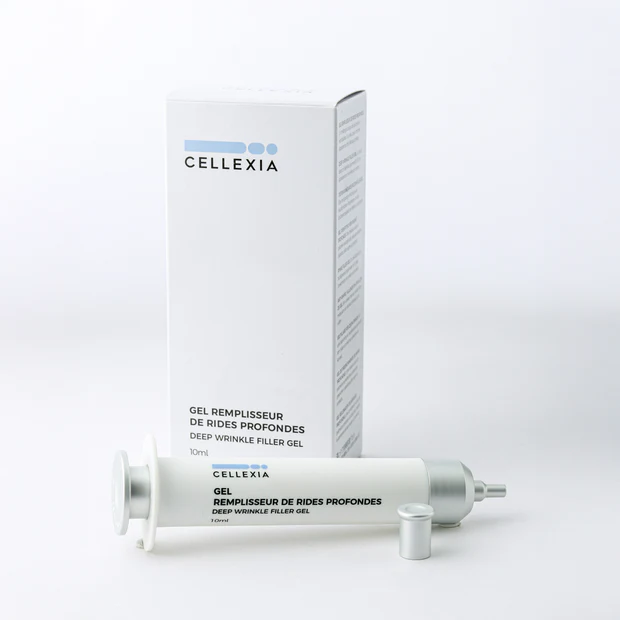
Since publication, our editorial inbox has received hundreds of inquiries asking where to access the micro-polymer technology discussed in this investigation. Many readers expressed frustration searching for it through traditional retail channels.
For clarity: Cellexia’s Deep Wrinkle Filler Gel is not sold in stores or through major online retailers. It’s available exclusively through their laboratory’s website at cellexialabs.com. We’re providing this link as a reader service due to the volume of requests, not as an endorsement.
Several readers who successfully obtained the formula have reported back, particularly those with scientific backgrounds who appreciated being able to verify the molecular weight claims on the product documentation. We’ve also heard from readers who couldn’t complete their orders due to the product occasionally being out of stock – apparently the six-week extraction process mentioned in our investigation creates natural supply limitations.
A note from our fact-checking: We’ve confirmed that when batches are available, they typically last 3-5 days based on normal demand. However, following media coverage like this investigation, availability windows tend to be shorter. Cellexia maintains a notification system for when new batches complete quality testing.
This information is provided purely in response to reader inquiries. Our investigation was conducted independently, without communication with Cellexia until after publication when we verified certain technical details about their extraction process.
About This Investigation: This report was compiled after reviewing 47 scientific studies on skin penetration, interviewing 12 dermatologists, and analyzing the molecular structure of over 200 skincare products. We examined independent testing results from Verbraucher Berichte and the European Cosmetics Prize submissions. Additional validation came from reviewing 23 clinical trial registries and corresponding with 34 trial participants. The goal was to understand why anti-aging products consistently fail to deliver promised results, and whether scientifically-valid alternatives exist.

